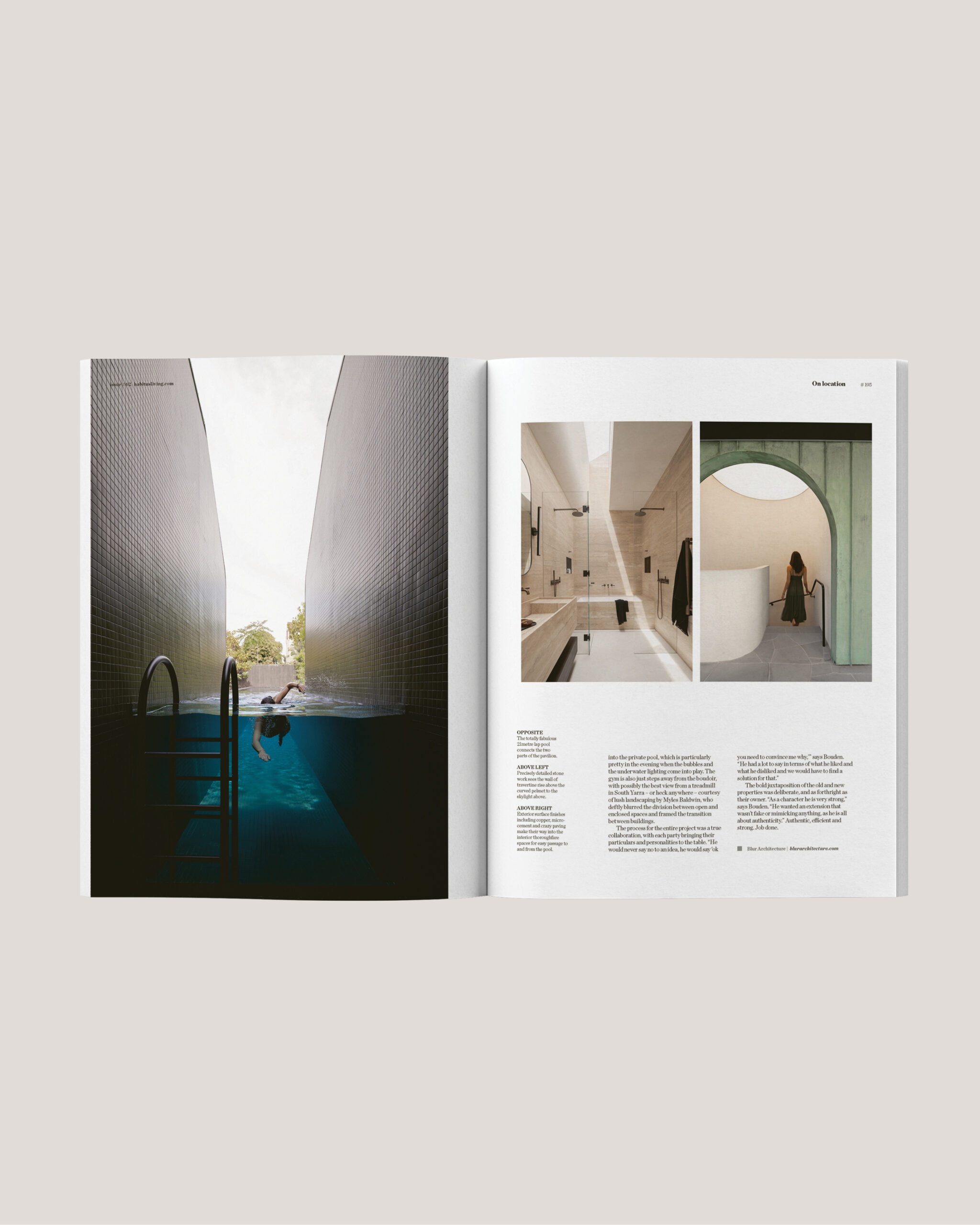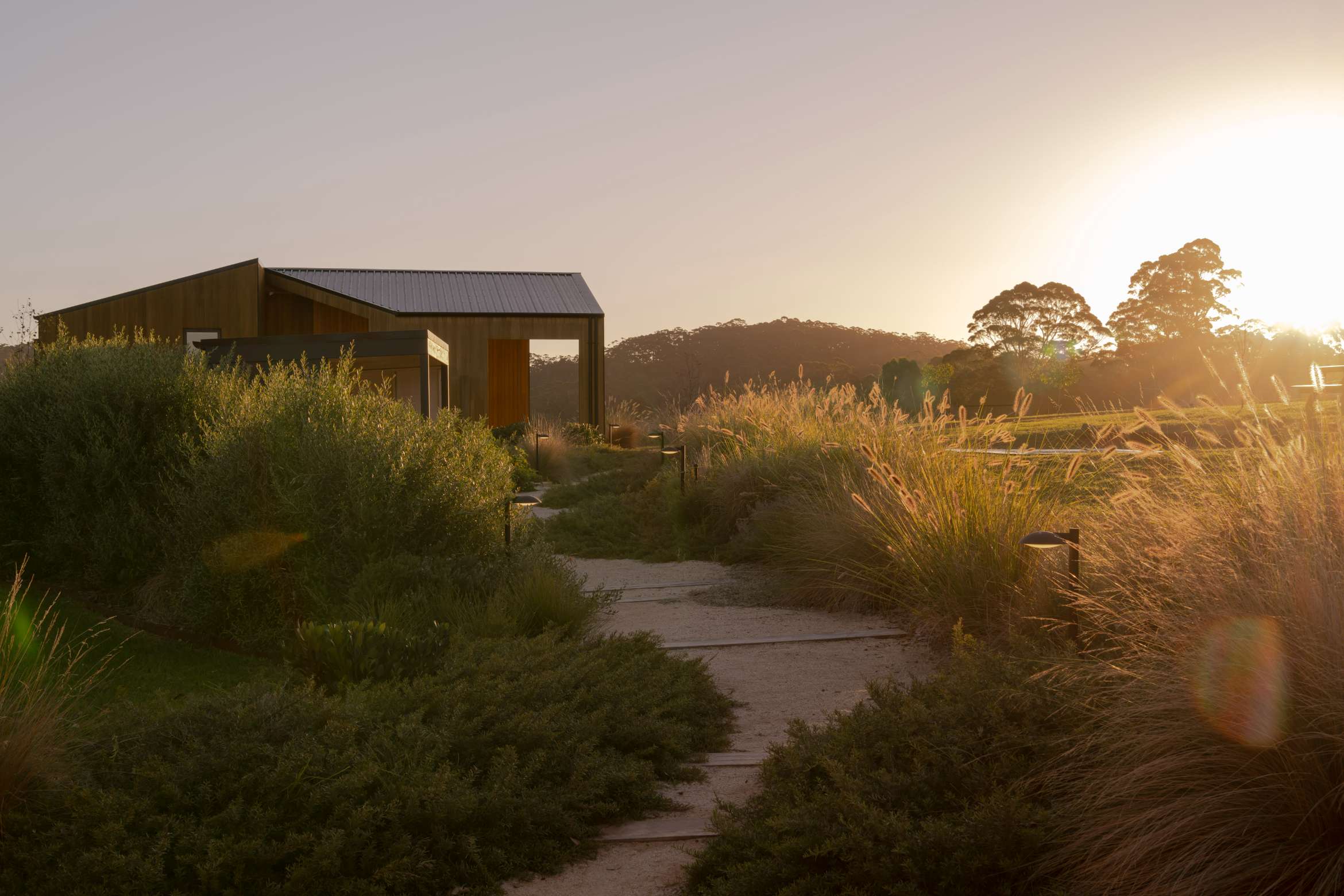With views over neighbouring wineries and the Karri Forest, Upland Farm, designed by Nikki Ross and La Haus, offers boutique cabin accommodation on a working cattle farm in Denmark, Western Australia. This restorative, bucolic escape softens the demanding tempo of life, providing a space to engage in slow-living practices, layered with textural design features that elevate the luxury of the provincial locale.
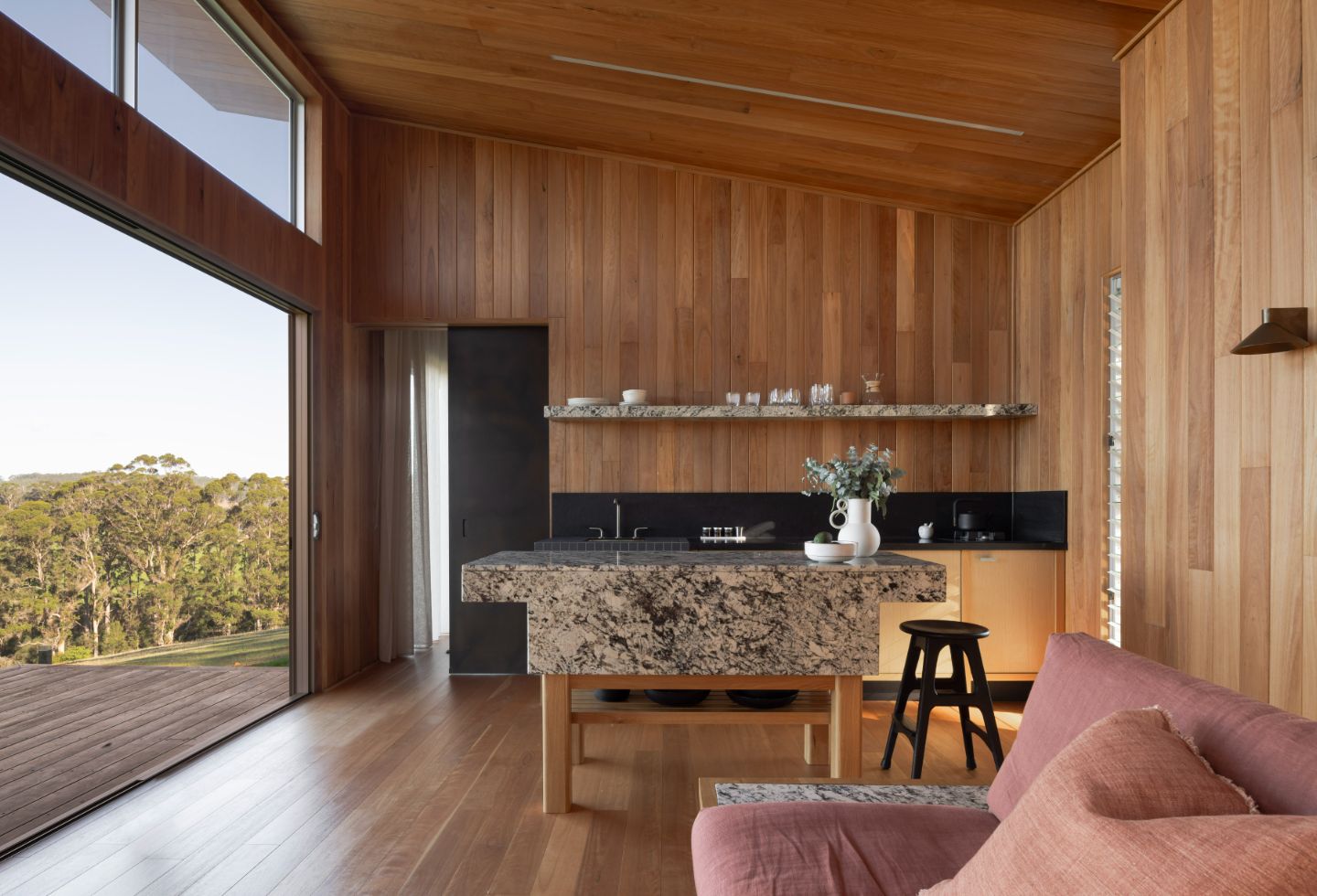
The impetus of the design was to create a junction between the architecture and the remnant vegetation, anchoring the secluded cabins within the broader landscape. “We tailor our planting and landscape design to suit the architecture and the site, which is usually a large rural or coastal property. We don’t often have a fence or obvious boundary, so we have to consider where we start our cultivated garden and how that blends back into the borrowed landscape,” says Patrick O’Neil, Director of Drift Landscape Studio.
Related: Pippins is an architectural response to the land itself
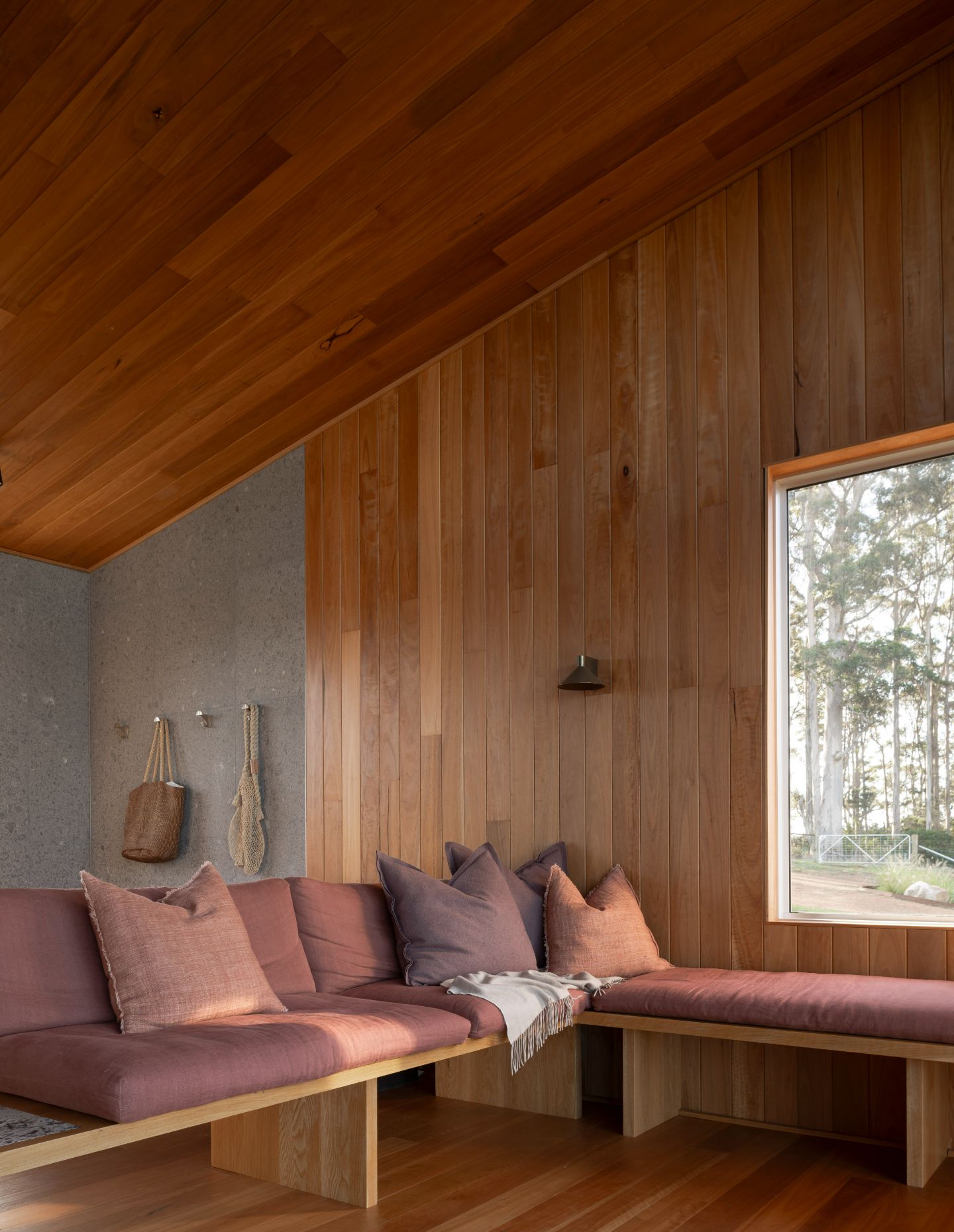
Many of the materials were sourced from the farm itself – including decommissioned concrete water troughs repurposed as herb beds for guests, site-sourced granite boulders, and recycled timber from the cabin construction for path inlays and vegetable beds – creating a muted agricultural materiality that strengthens the organic feel of the rural landscape. The circular form of the troughs influenced the curvature of the concrete benches framing the dual firepit areas, while crushed quartz fines along the paths invite guests to wander barefoot through the gardens.
The result is a contextual response to the working cattle farm, with a design scheme that emulates the diurnal light washing through the soft inflorescences of paddock grasses, replicated in the garden with native Pennisetum, Poa, and Lomandra species. The blue and green hues of the native groundcovers are drawn from the forest, creating a landscape that sits harmoniously within the farm and its surroundings – evoking the feeling that it has always been there.
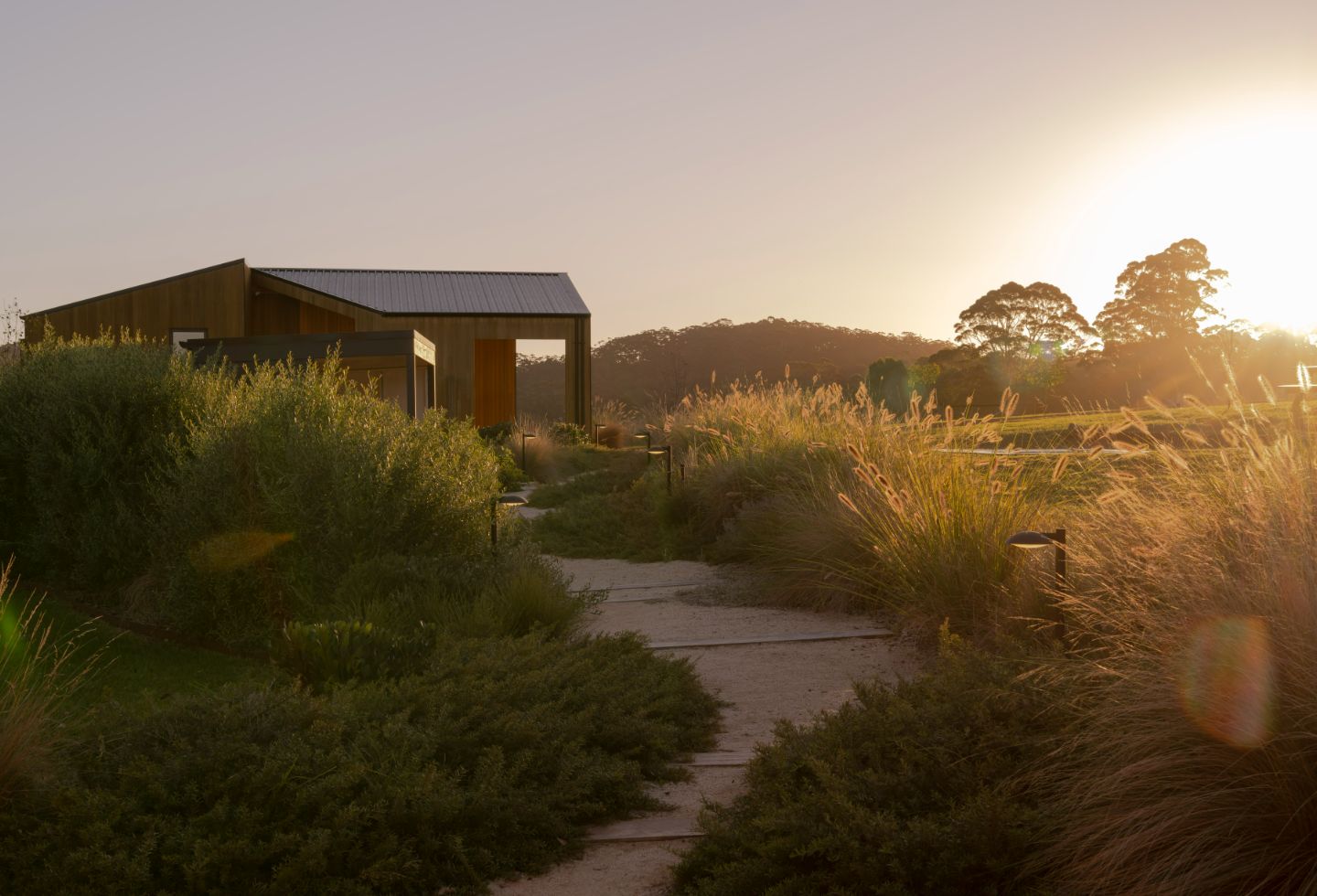
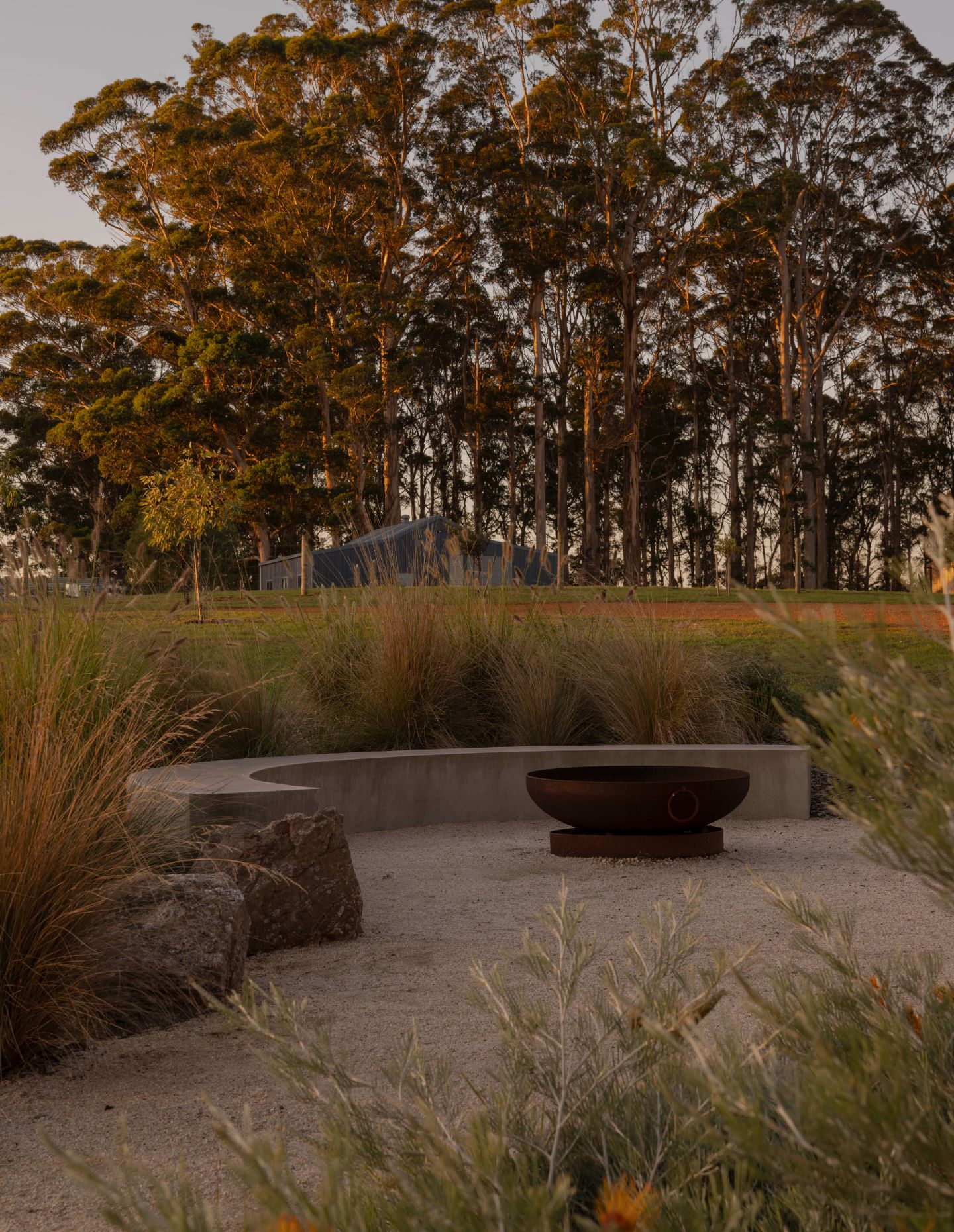
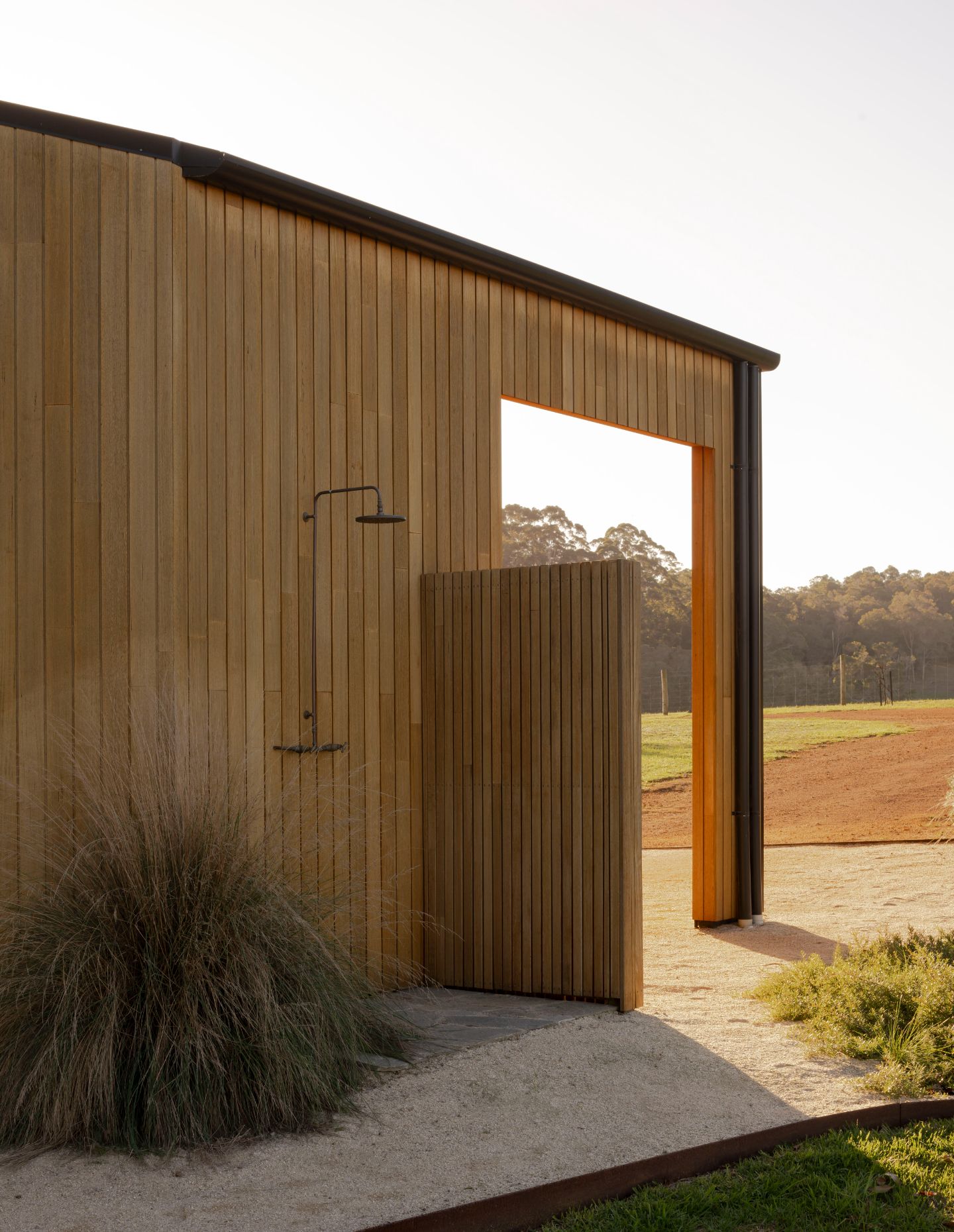
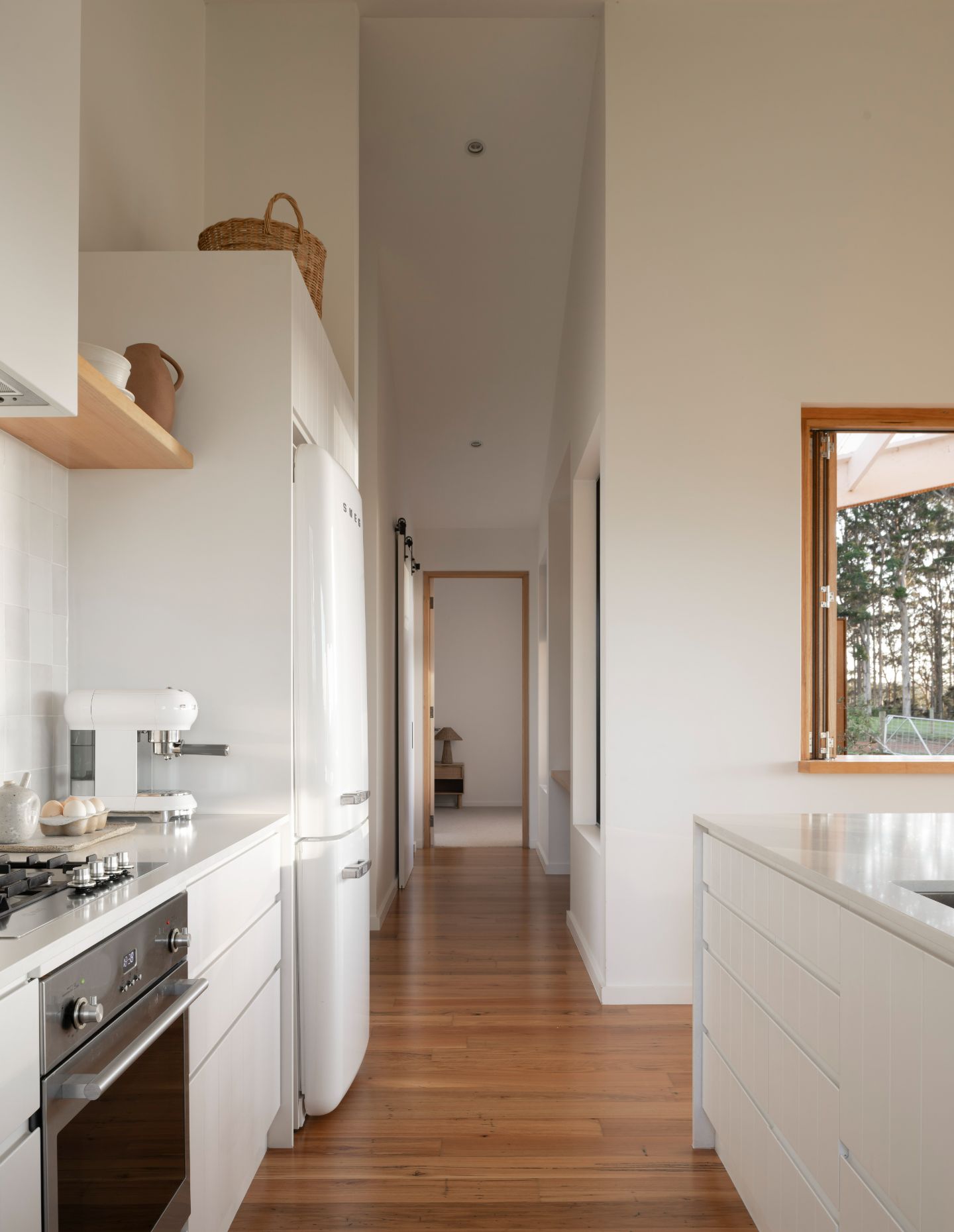
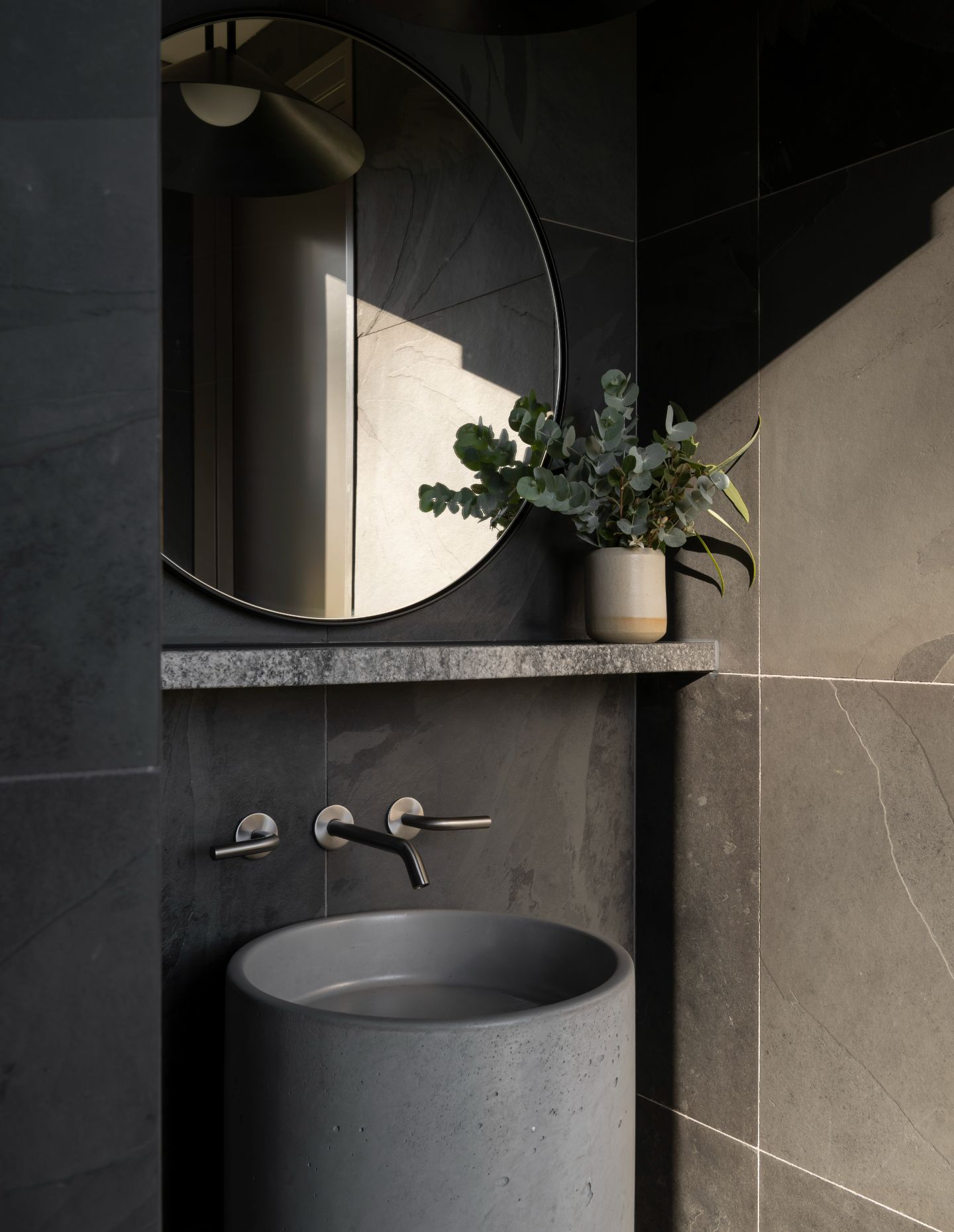
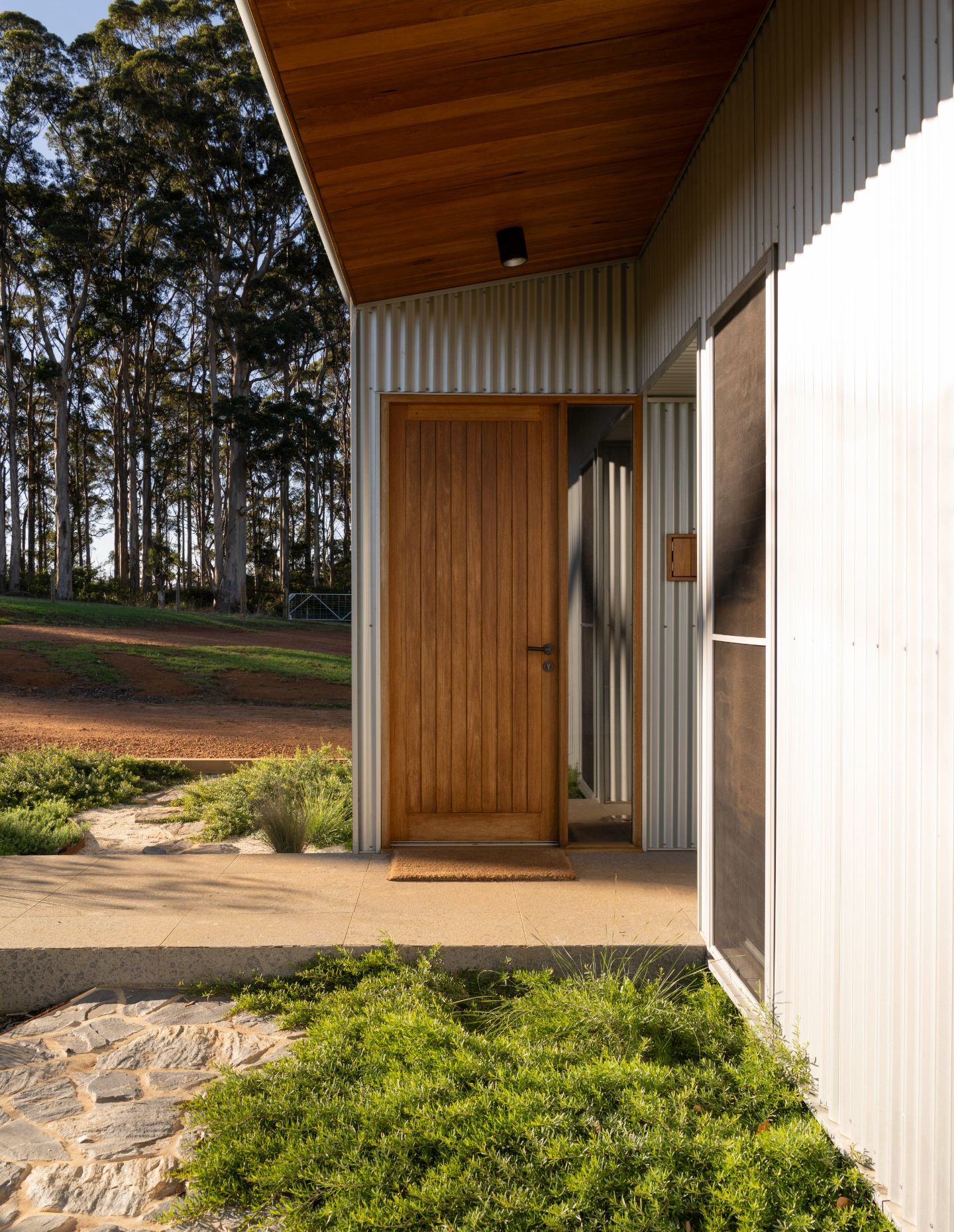
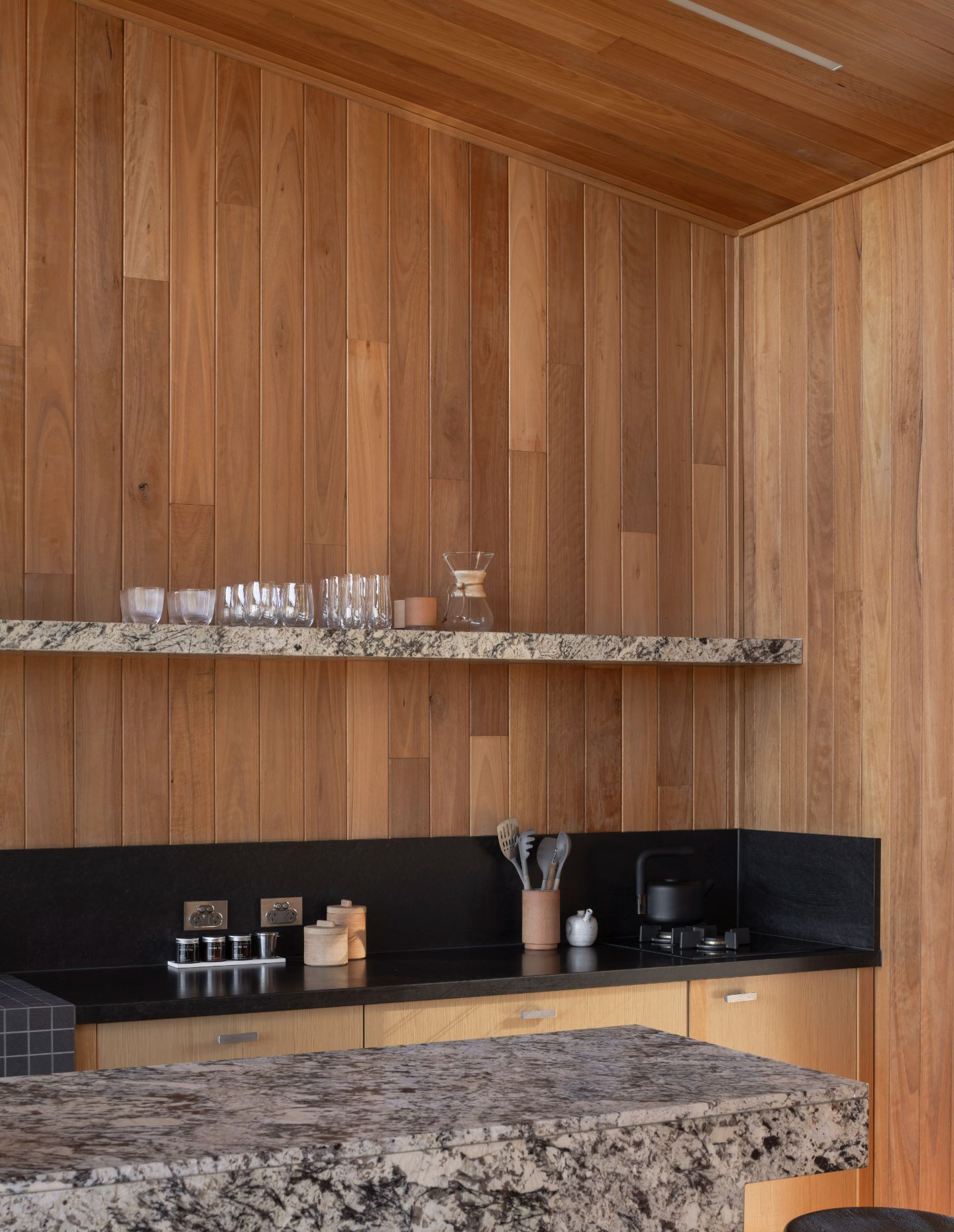
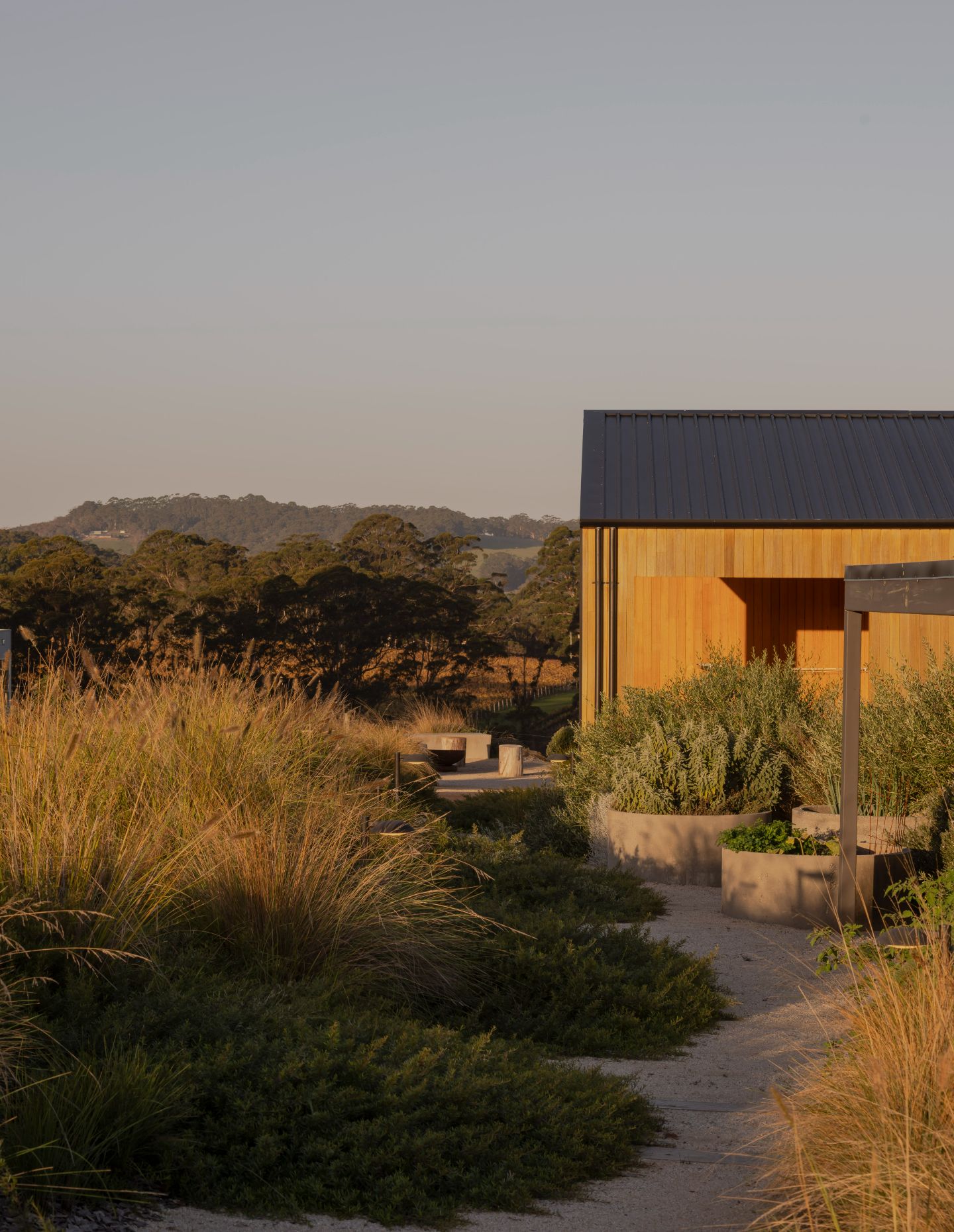
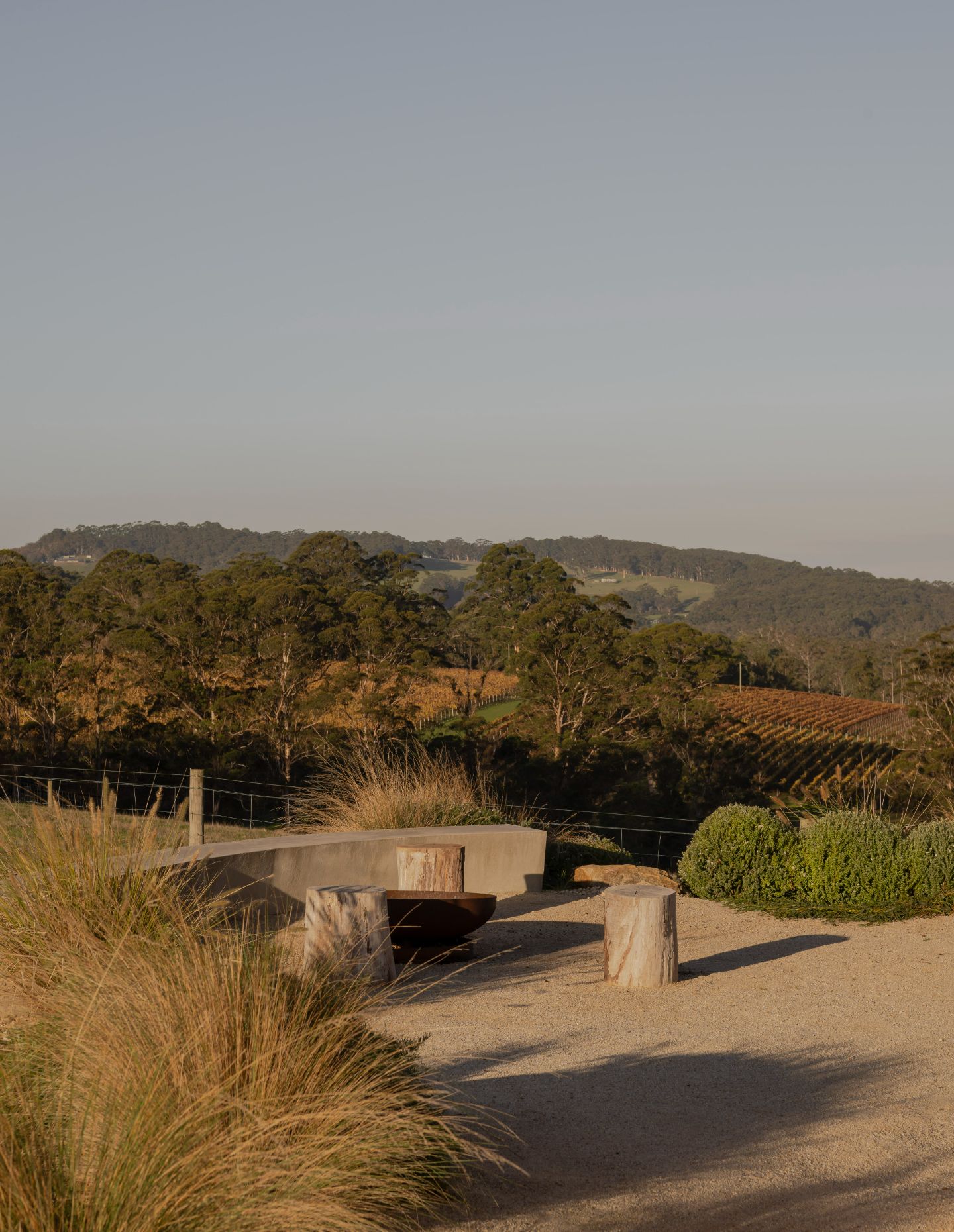
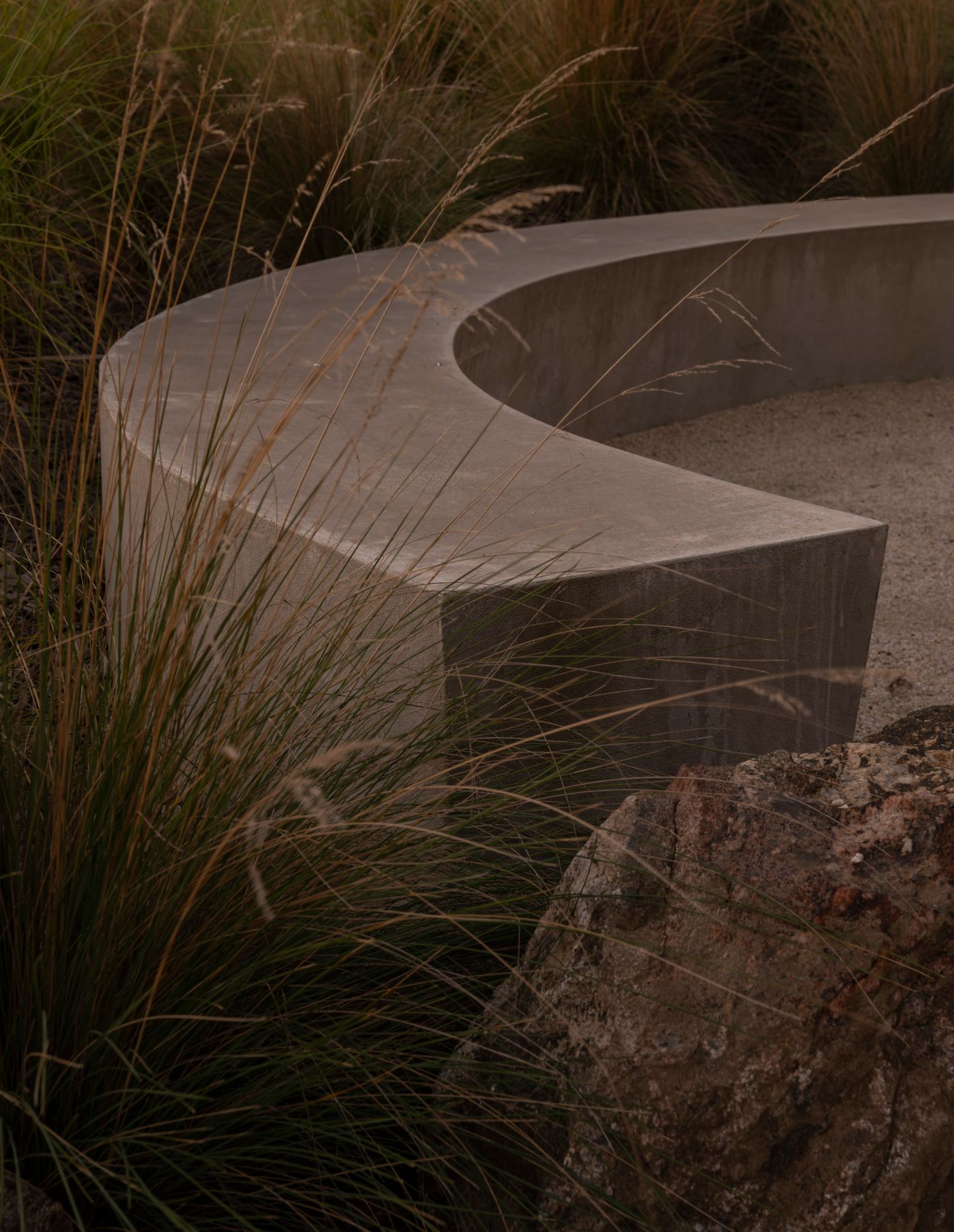
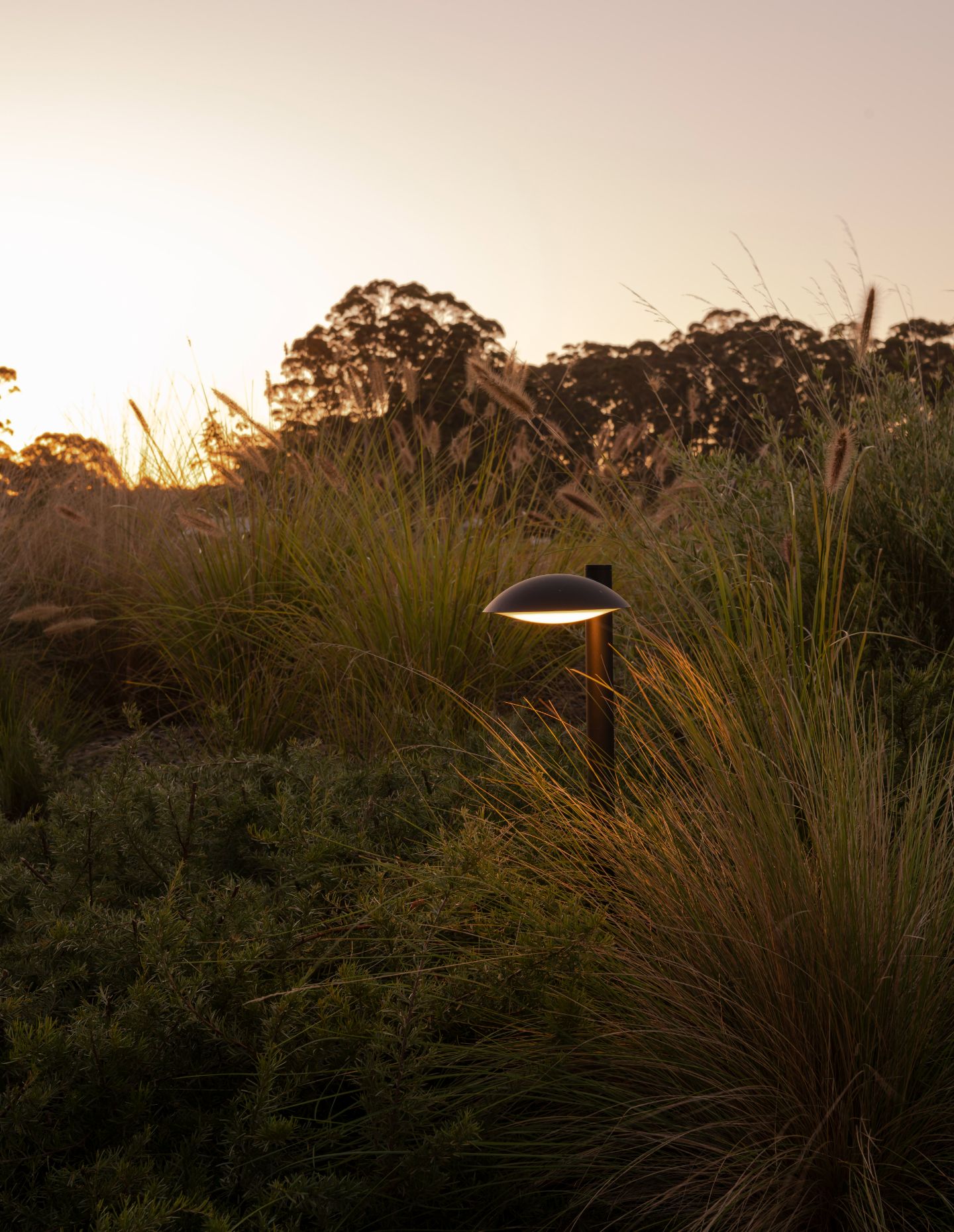
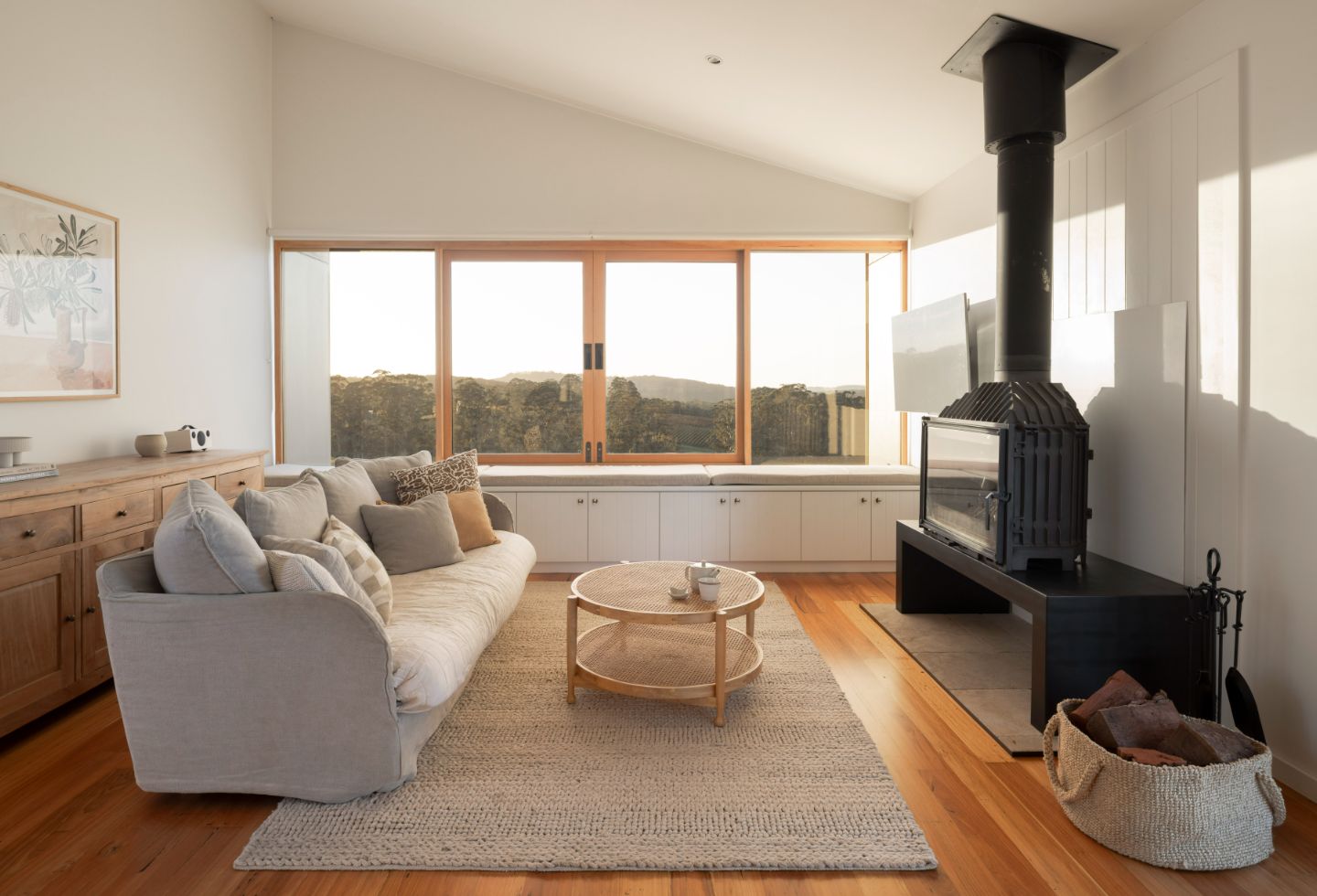
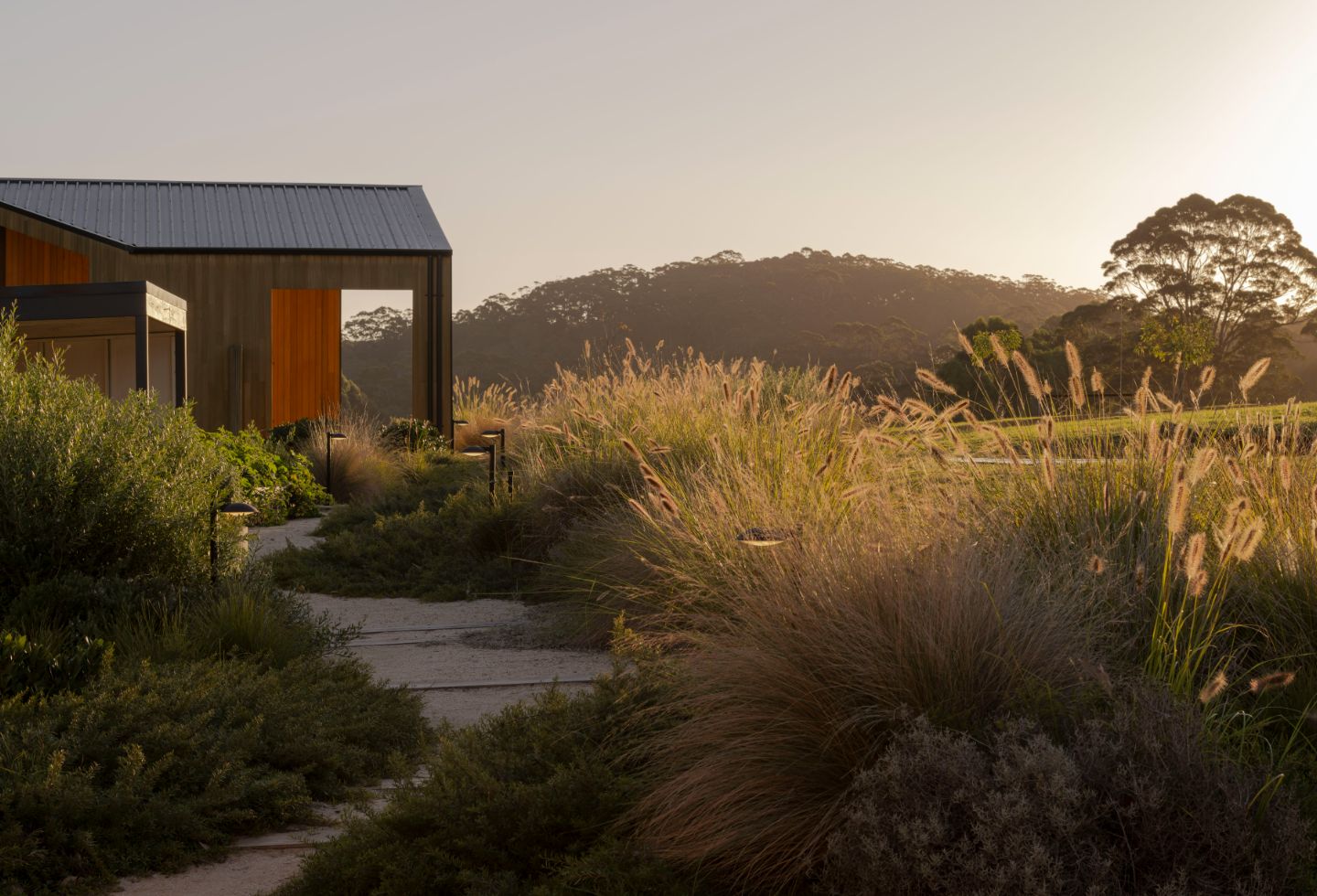
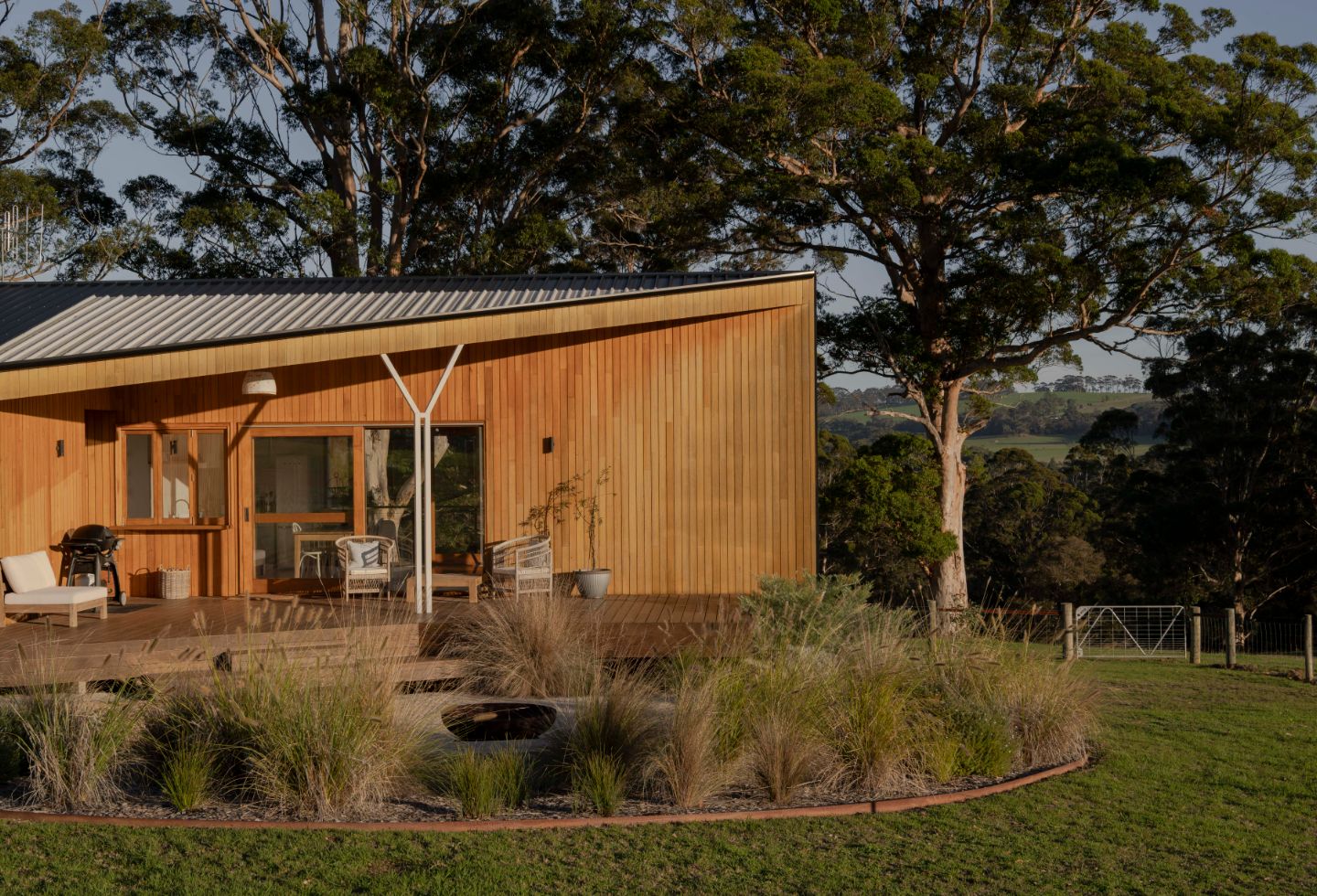
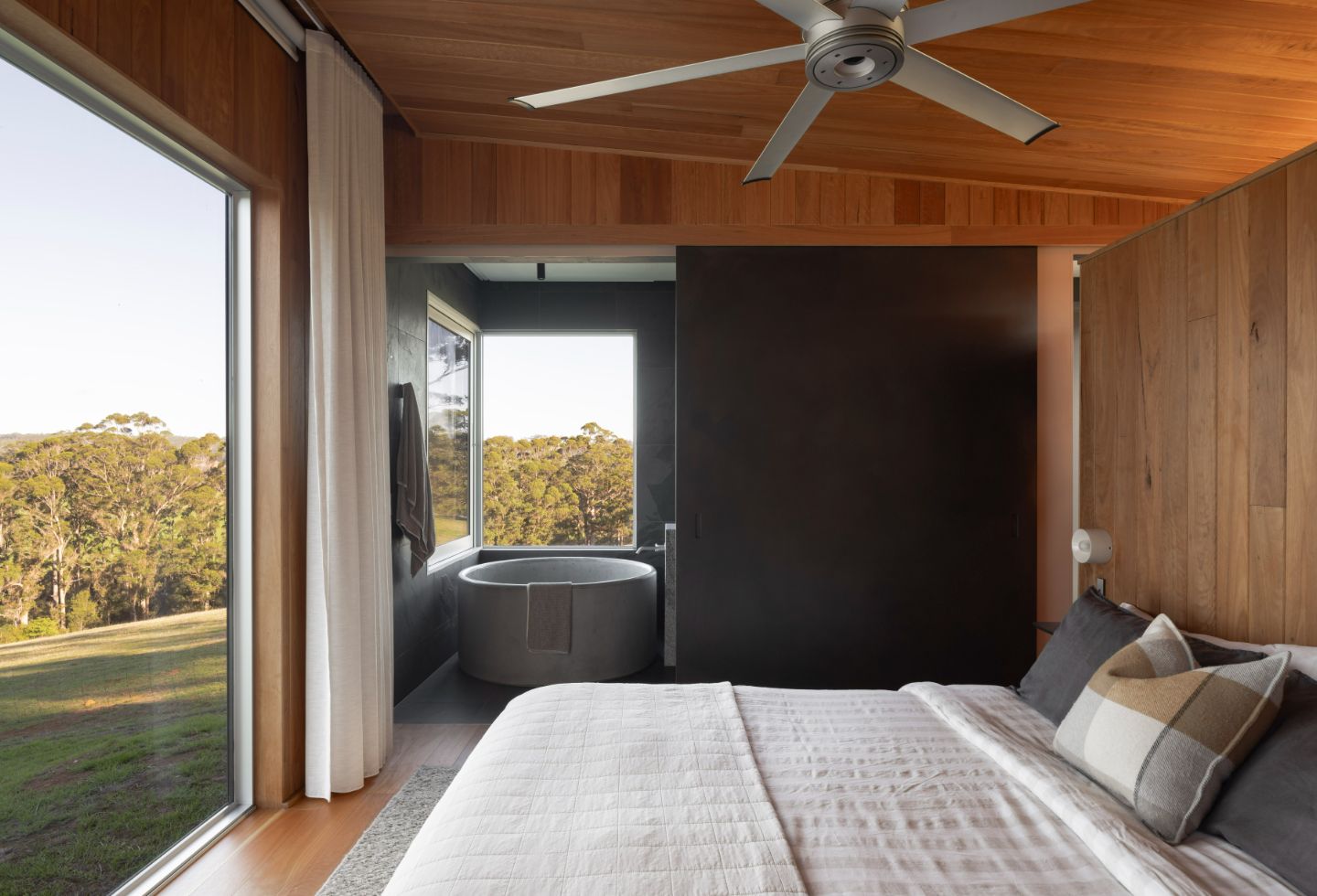
Next up: Burnt Earth Beach House materialises from the ashes of a dilapidated beach shack
